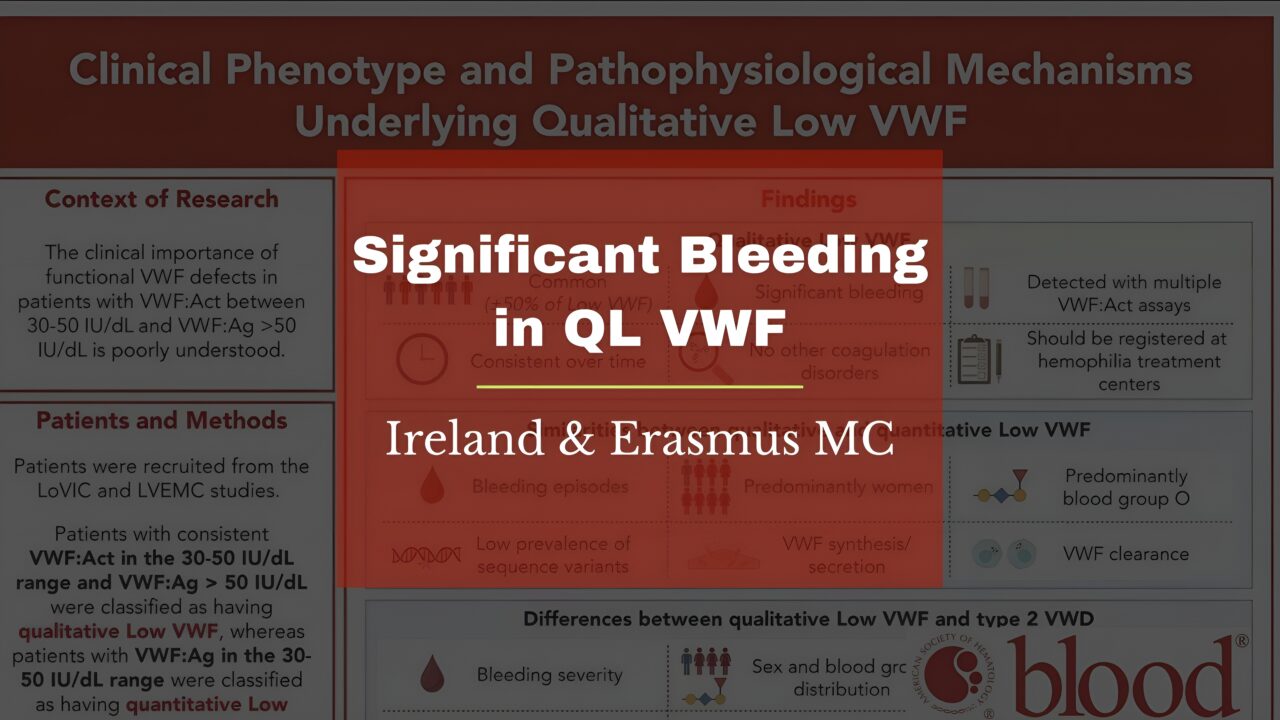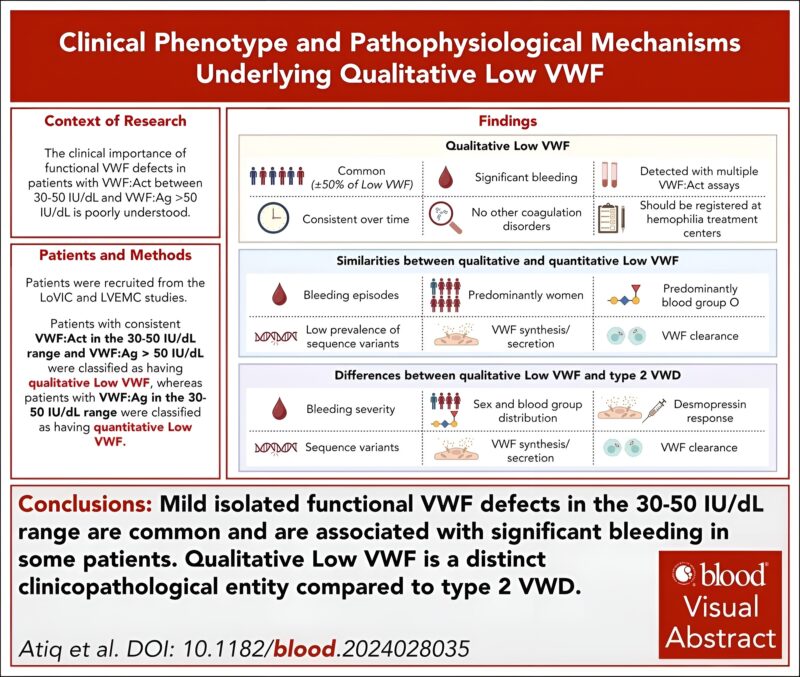
5 Crucial Insights into Low VWF QL: Uncovering a Distinct Cause of Bleeding
Blood Journals Portfolio, an official portfolio of ASH journals, shared a new sudy on X:
”Mild isolated functional VWF defects in the 30 to 50 IU/dL range are common and are associated with significant bleeding in some patients.”
Read the full article here.
The recently published article ‘Clinical phenotype and pathophysiological mechanisms underlying qualitative low VWF‘ by Ferdows Atiq et al. in Blood, sheds light on the significant complication risk for people with mild isolated VWF defects.
Emerging data from these combined cohorts in Ireland and Erasmus MC reveal that qualitative low von Willebrand factor (low VWF QL)—characterized by isolated reductions in VWF activity (30–50 IU/dL) despite normal antigen levels—accounts for approximately 50% of patients with low VWF.
Unlike type 2 von Willebrand disease (VWD), low VWF QL represents a distinct clinicopathological entity marked by significant bleeding phenotypes in many affected individuals.
Importantly, these functional defects are primarily driven by impaired VWF biosynthesis in endothelial cells, independent of known genetic variants.
These findings underscore the need for refined diagnostic approaches and tailored management for patients with mild functional VWF defects.

All the latest scientific advancements in the field of bleeding disorders featured in Hemostasis Today.
-
Dec 6, 2025, 18:02ASH25 Day 1: Don’t Miss The Highlights
-
Dec 6, 2025, 15:44Atul Gupta on Where The Healthcare Innovation is Headed
-
Dec 6, 2025, 15:22Nathan White on How Inflammation Contributes to Coagulopathy After Trauma
-
Dec 6, 2025, 15:02Anas Younes on AstraZeneca’s Aims in Blood Cancer to Be Presented at ASH25
-
Dec 6, 2025, 14:08David Alderman: ASH25 is Live
-
Dec 6, 2025, 13:53Isabelle Mahé Presents The Proposals from INNOVTE CAT Working Group
-
Dec 6, 2025, 11:50Steve Tuplin on Roche’s Mission at ASH25
-
Dec 6, 2025, 11:13Khaled Musallam on The Lancet Haematology Podcast: Your ASH25 Roadmap
-
Dec 6, 2025, 06:34Akshat Jain: It was Wonderful Hosting and Meeting Industry Leaders on Their Visit Down to Southern California
